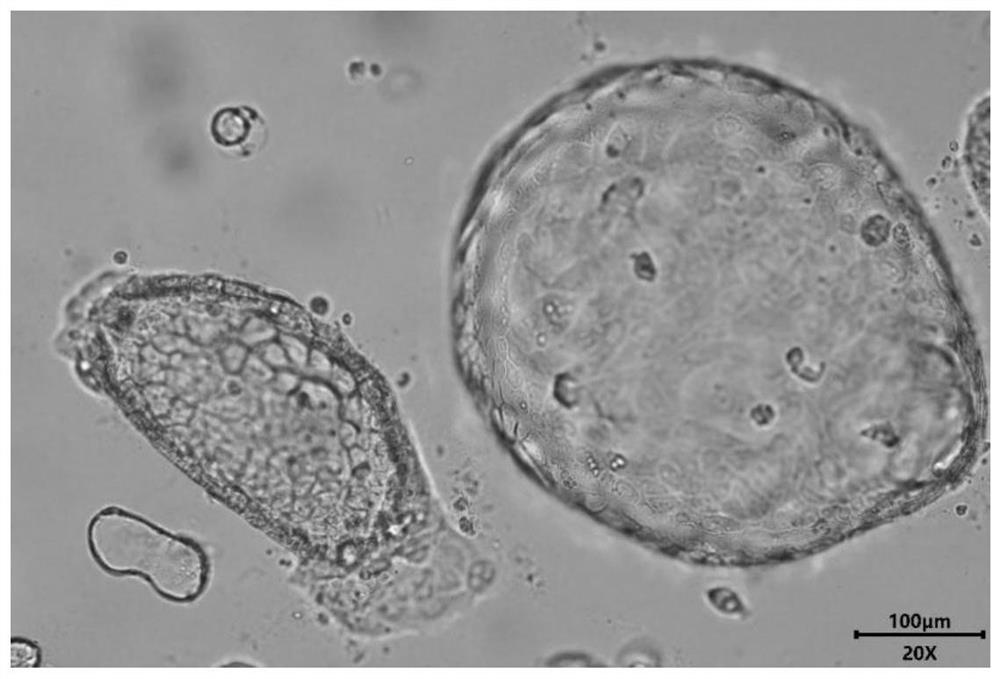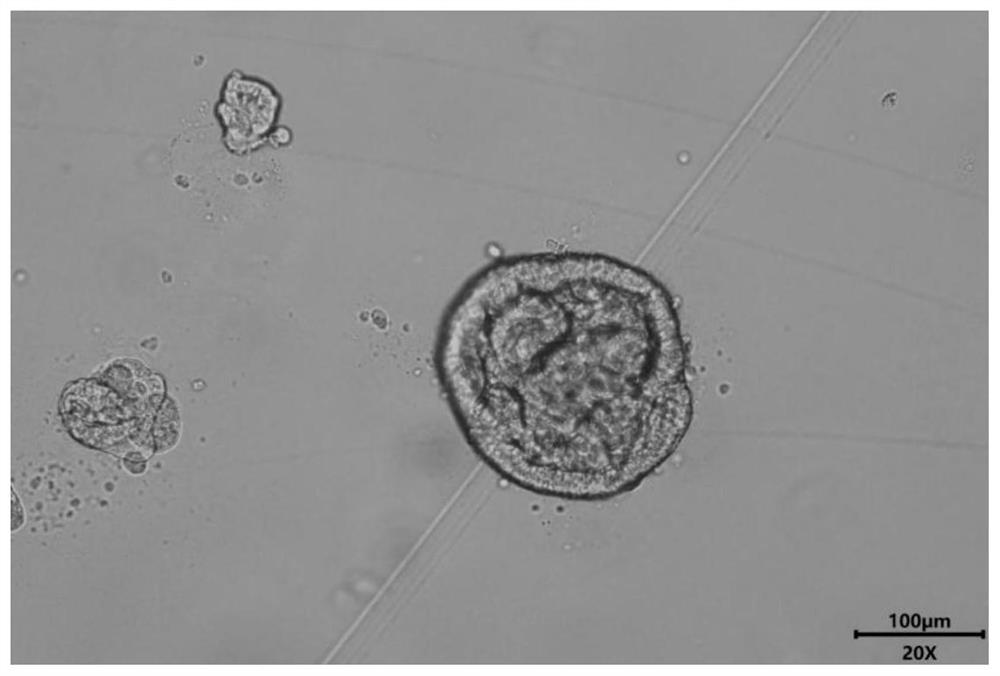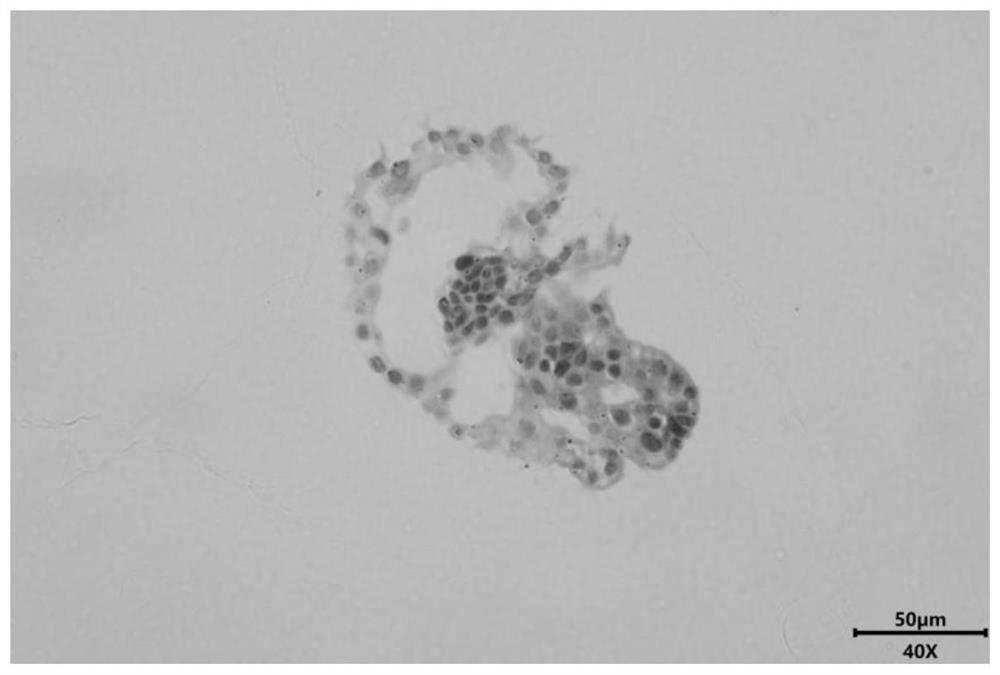Mouse liver organoid model, establishing method therefor and application of mouse liver organoid model
A technology for establishing methods and organoids, applied in the field of biomedicine, can solve the problems of inability to perform rapid high-throughput detection and analysis, limited practicability and long-term culture capacity, and limit the breadth and depth of research, so as to shorten the culture period and cost. Low, high cost effect
- Summary
- Abstract
- Description
- Claims
- Application Information
AI Technical Summary
Problems solved by technology
Method used
Image
Examples
Embodiment 1
[0046] This embodiment provides a method for establishing a mouse liver organoid model, comprising the following steps:
[0047] 1) Sample cleaning: the mouse liver tissue was washed several times with normal saline containing 1% double antibody, and the obvious fat tissue was removed.
[0048] 2) Sample cutting: cut the tissue into small pieces of about 1 mm^3, and observe under the microscope whether there are cells leaking out.
[0049] 3) Tissue digestion: ① Collect the sheared tissue into a 15mL centrifuge tube with normal saline, centrifuge to remove the supernatant, add collagenase, dispase and DNaseI to the precipitate, shake and digest at 37°C for 30min, add 1% double antibody for physiological Stop the digestion with saline, let the sediment stand still, suck off the supernatant as much as possible, and collect the cell pellet; ②Continue to add collagenase, dispase and DNaseI to the pellet, shake and digest at 37°C for 30 minutes, add 1% double-antibody normal saline...
Embodiment 2
[0056] This embodiment provides a method for establishing a mouse liver organoid model, and simultaneously uses the established liver organoid to investigate the efficacy of dexamethasone on liver cells, specifically including the following steps:
[0057] 1) Sample cleaning: the mouse liver tissue was washed several times with normal saline containing 1% double antibody, and the obvious fat tissue was removed.
[0058] 2) Sample cutting: cut the tissue into small pieces of about 1 mm^3, and observe under the microscope whether there are cells leaking out.
[0059] 3) Tissue digestion: ① Collect the sheared tissue into a 15mL centrifuge tube with normal saline, centrifuge to remove the supernatant, add collagenase, dispase and DNaseI to the precipitate, shake and digest at 37°C for 30min, add 1% double antibody for physiological Stop the digestion with saline, let the sediment stand still, suck off the supernatant as much as possible, and collect the cell pellet; ②Continue to ...
PUM
 Login to View More
Login to View More Abstract
Description
Claims
Application Information
 Login to View More
Login to View More - R&D
- Intellectual Property
- Life Sciences
- Materials
- Tech Scout
- Unparalleled Data Quality
- Higher Quality Content
- 60% Fewer Hallucinations
Browse by: Latest US Patents, China's latest patents, Technical Efficacy Thesaurus, Application Domain, Technology Topic, Popular Technical Reports.
© 2025 PatSnap. All rights reserved.Legal|Privacy policy|Modern Slavery Act Transparency Statement|Sitemap|About US| Contact US: help@patsnap.com



